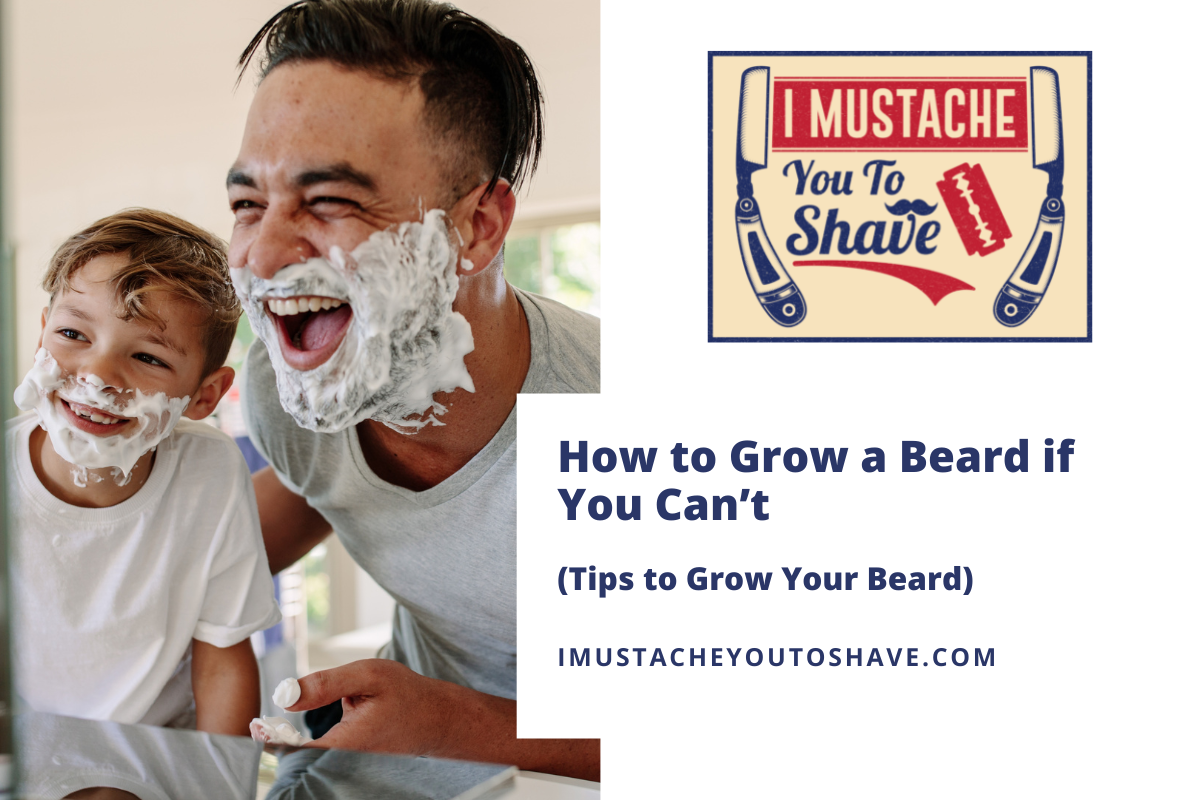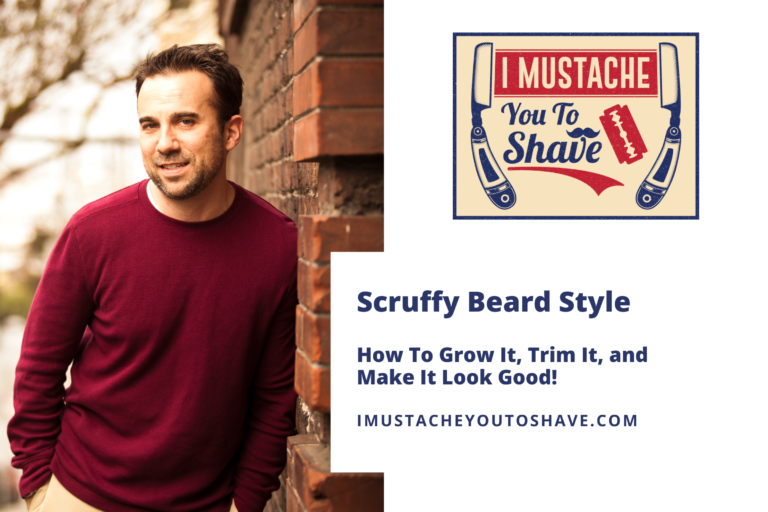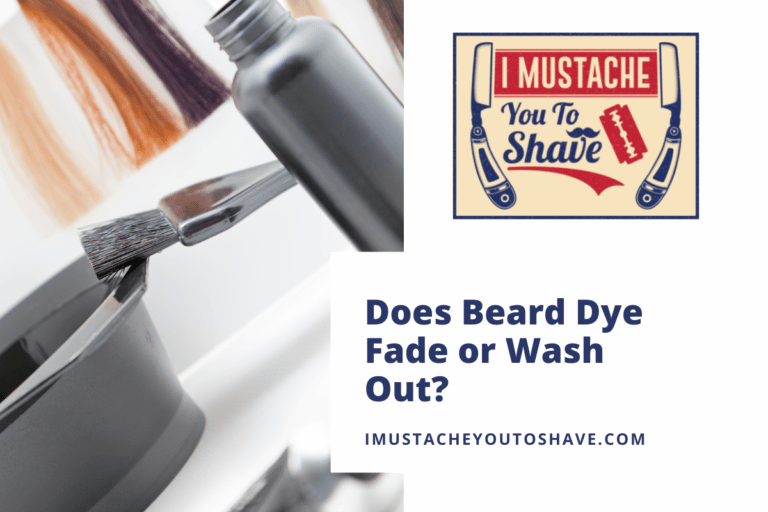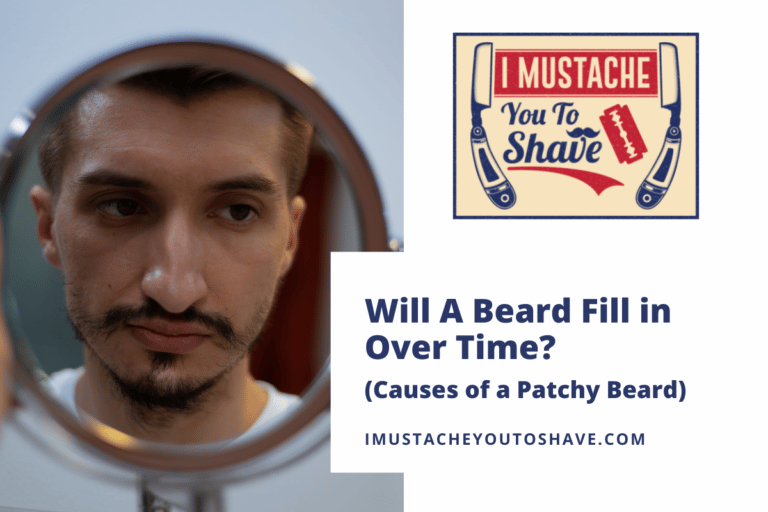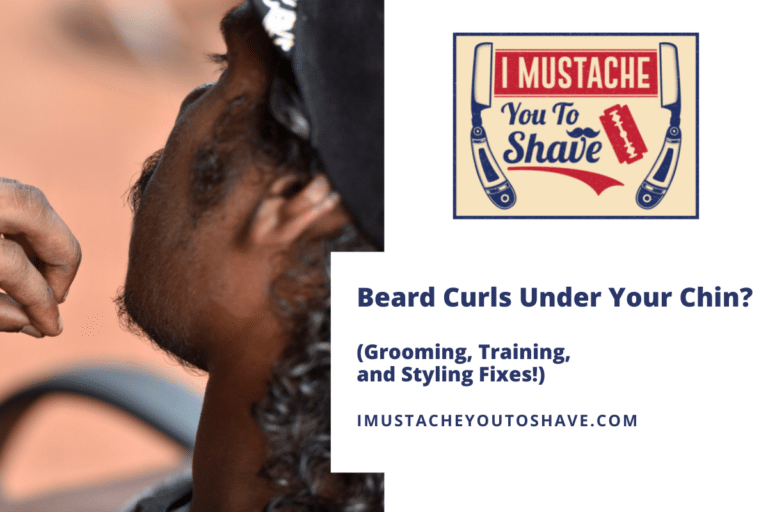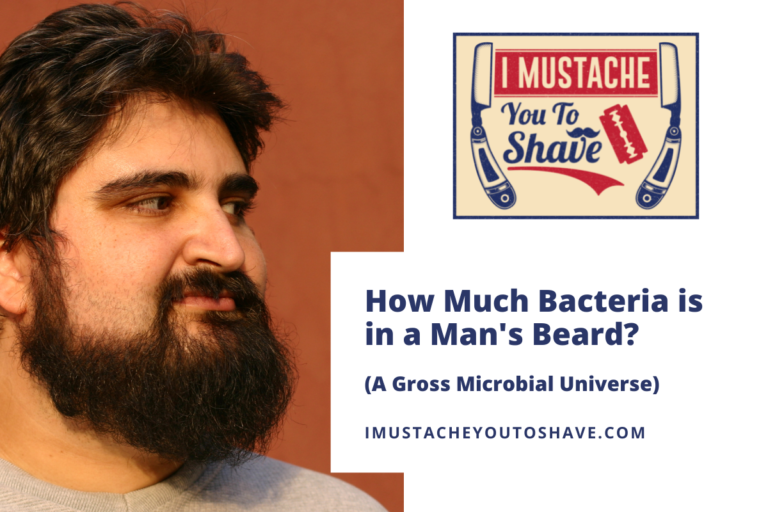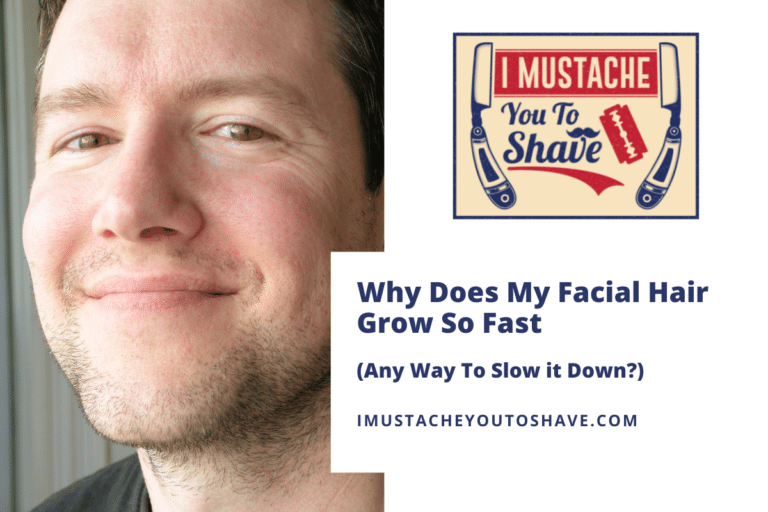How to Grow a Beard if You Can’t (Separating 8 Myths from Facts)
Some people are stuck with small patches of beards while others live their life facial-hair free. If you’re struggling to grow a beard, is there anything that can be done?
Not everyone can grow a beard, but ingesting the right foods and vitamins can trigger hair growth. You will often simply need to wait until your beard has fully matured. If, however, you want to boost your natural beard, you can try applying minoxidil to patchy areas or undergoing micro-needling sessions to stimulate growth.
Keep reading to learn more about how people bring out their beards.
Why can’t I grow a proper beard?
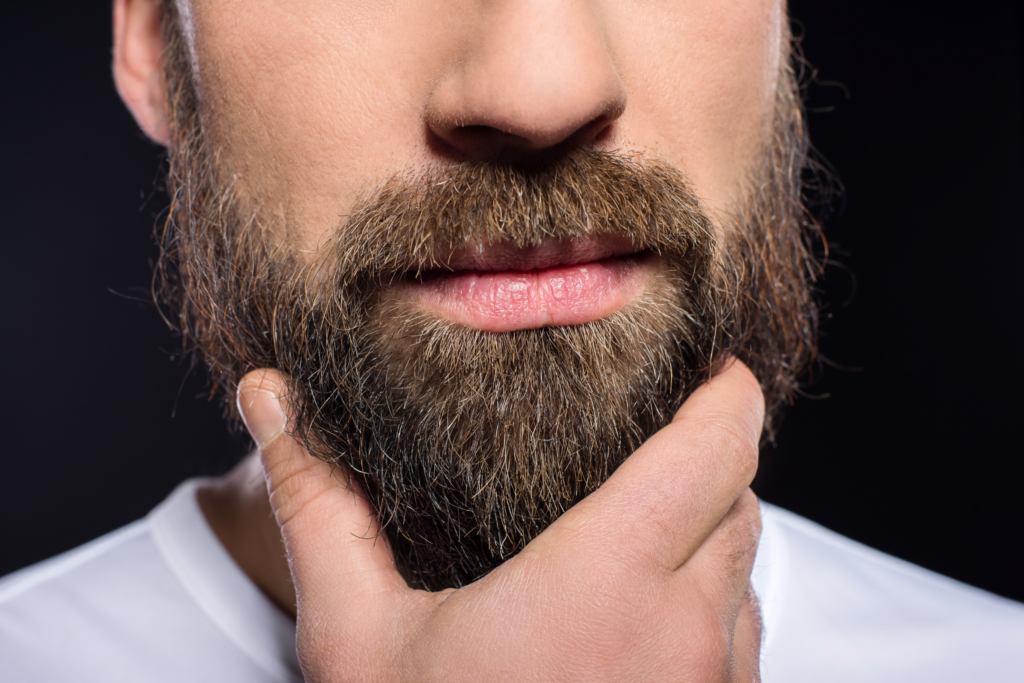
Some people can grow facial hair that is patchy and doesn’t form a beard. Some people can’t grow facial hair at all.
To find out why your beard may not be growing, ask yourself the following questions:
- How old are you?
- Is your body producing enough testosterone?
- Are you at risk for alopecia areata?
- Do your genetics prevent you from growing facial hair?
Let’s unpack why these questions are so important.
How old are you?
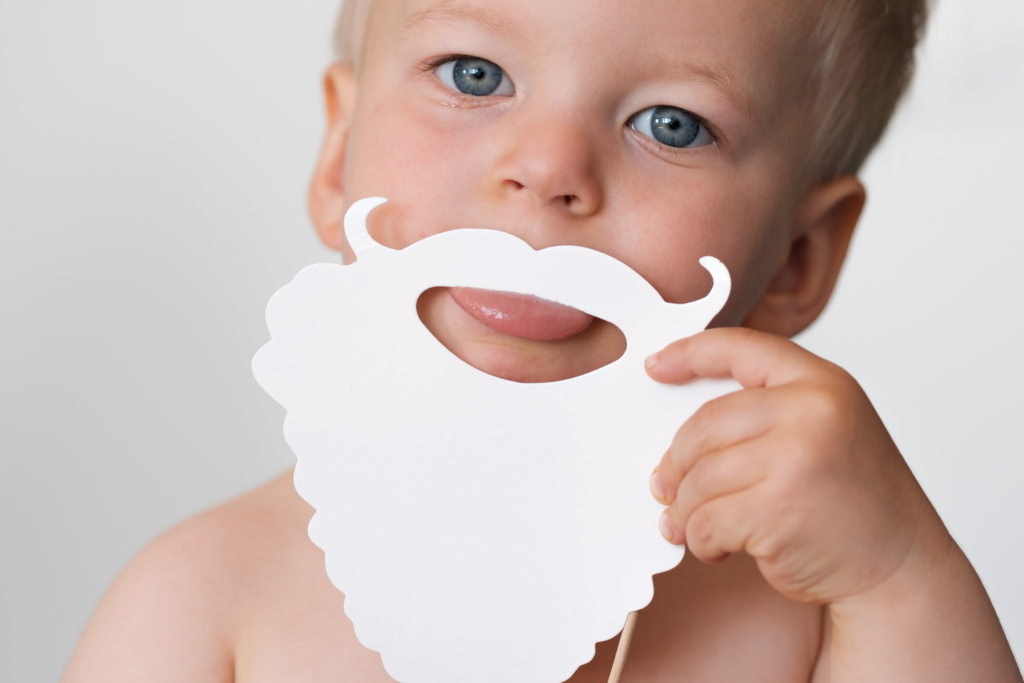
Your age can greatly impact how strong of a beard you can grow.
Your beard hair follicles are different from the hair follicles on your scalp. Facial hair growth is triggered by testosterone, similar to your body hair. This is why these two hair types are so similar and different from your head hair.
Similarly, if you’re too young, you can’t grow facial hair until your body produces testosterone during puberty. If you’re too old, you may struggle to grow a beard
Some men see facial hair growth in their teens, but others don’t even start or become thicker once they reach their 20s. As time passes, some of those androgenic hair follicles may stop producing hair altogether, although we’ll cover that later.
Is your body producing enough testosterone?
As you’re probably beginning to understand, testosterone is essential to beard growth.
If your body is producing too little testosterone, this may be a cause of your bare chin. You may have seen commercials advertising ways to pump up your testosterone, but scientists are still working to understand the best way to combat low testosterone fully.
Having too low testosterone is called “hypogonadism” and is estimated to impact 39% of men aged 45 years or older presenting to primary care offices. While the symptoms can be hard to catch, they can include decreased lean body mass, fatigue, increased anxiety, anemia, and decreased libido, among other afflictions.

One main course of treatment that scientists recommend is testosterone replacement therapy, but this form of therapy has side effects and should be considered with doctor oversight.
For people who are overweight, doctors recommend working out since losing weight can naturally generate testosterone.
Are you at risk for alopecia areata?
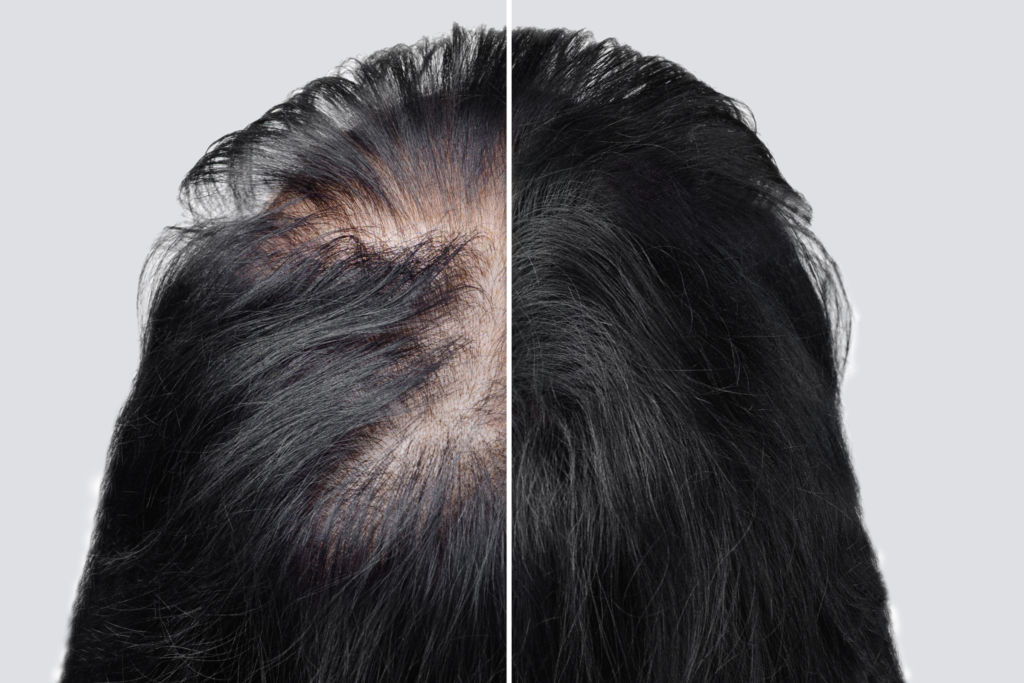
If you haven’t heard of alopecia areata, it’s a common type of hair loss experienced by more than 300,000 people in the U.S. each year.
Alopecia areata commonly causes hair loss on men’s and women’s scalps, but it can present in different locations on the body. This condition tends to cause patchy hair loss for people who once had hair, but can also prevent hair growth. There is a strong hereditary component so check if you have a family history of this condition.
The United States government approved its first oral treatment for alopecia areata in 2022. The best part about the Olumiant (baricitinib) oral tablet is that it treats the entire body instead of just the scalp.
Consult with a doctor before self-diagnosing any possible reason for hair loss.
Do your genetics prevent you from growing facial hair?
It’s nearly impossible to overstate your genetics’ importance when we talk about your facial hair potential.
Start by speaking with the men in your family. Is anyone else able to grow facial hair, or are they beardless? When did their beards come in? Were they patchy, thin, or thick?
The reality is that some people don’t have the ability to grow facial hair in their genes. This has been observed across different ethnicities around the globe. But it can be hard to tell if you fall into this category until you’ve tried all your options.
Technology hasn’t advanced enough for people to be able to examine their own genome, so until then, a quick question should help you figure things out.
How long does it take to grow a beard?
Beard hairs grow fast, twice as fast as your eyebrows in fact.
Facial hairs grow a half millimeter or less per day or about half an inch per month. Additionally, people with naturally white hair have faster growth, reaching up to a full millimeter or more daily.
Of course, every man’s facial hair is different and your hair may grow at faster or slower rates. And there are many things people can do to boost hair growth.
Is it possible for anyone to grow a full beard?
Beards are defined as hair growing on the lower part of the face, excluding the mustache.
Not everyone can grow a beard. Several precluding factors like alopecia, genetics, and age can affect the state of your facial hair follicles. Also, stress can sometimes reduce your ability to grow a beard.
However, just because your hair doesn’t grow in bushes doesn’t mean you can’t stimulate facial hair growth.
Does no beard mean low testosterone?
From a decreased sex drive and decreased energy, doctors require multiple symptoms before diagnosing someone with low testosterone.
That said, people with low testosterone will likely struggle to grow a beard.
One nice thing about low testosterone is that avenues for treatment exist. Clinical trials found that once-daily testosterone solutions can restore normal testosterone levels.
What percentage of men can’t grow a beard?
Most of the funded research into facial hair focuses on questions about how beard hair growth works, not necessarily how many people have a beard.
Since 2020, an estimated 40% of men 16 to 64 have started to grow a beard. Many cited the desire to experiment and try out new facial hair styles. Additionally, a survey found that not having a beard is actually pretty common.
While the survey doesn’t indicate who can and can’t grow a beard, it’s common for men not to have one for a variety of reasons:
- 66% of Asian men don’t have a beard
- 32% of Black or African American men don’t have a beard
- 38% of Hispanic American or Latino men don’t have a beard
- 40% of White or Caucasian men don’t have a beard
- 32% of men who identify as other ethnicities don’t have a beard
The same survey also showed that anywhere from 10% to 35% of these ethnicities did have a beard, so whichever side you land on, you’re among good company.
At what age do most men get beards?
Many men remember their first darker beard hair coming in during the early stages of puberty.
Facial hair normally begins to grow between the ages of 13 to 16. However, the pace of hair growth at this age is not what one should expect for their entire life. People can be late bloomers or have their beard thickness change over the course of their lifetime.
As men age, their hair turns white. Scientists have observed that white facial hair actually grows faster than facial hair with pigment.
I guess that’s one thing to look forward to about aging!
How to grow a beard – myths vs facts
You’ve likely heard a hundred different things about beards throughout your life, but how can you tell what’s true or not?
We’ve reviewed common internet queries and researched academic articles to help you distinguish fact from fiction.
Does minoxidil actually work for beard growth?
Among western medicines, minoxidil is well-known and commonly used to treat androgenetic alopecia – hair loss on the scalp – in both men and women.
There are reports of using minoxidil topically on the chin that resulted in facial hair growth, but it’s not widely studied.
Minoxidil is available over-the-counter or through prescription and is mainly found in dosages ranging from 2 to 5 percent.
Can micro-needling help promote beard growth?
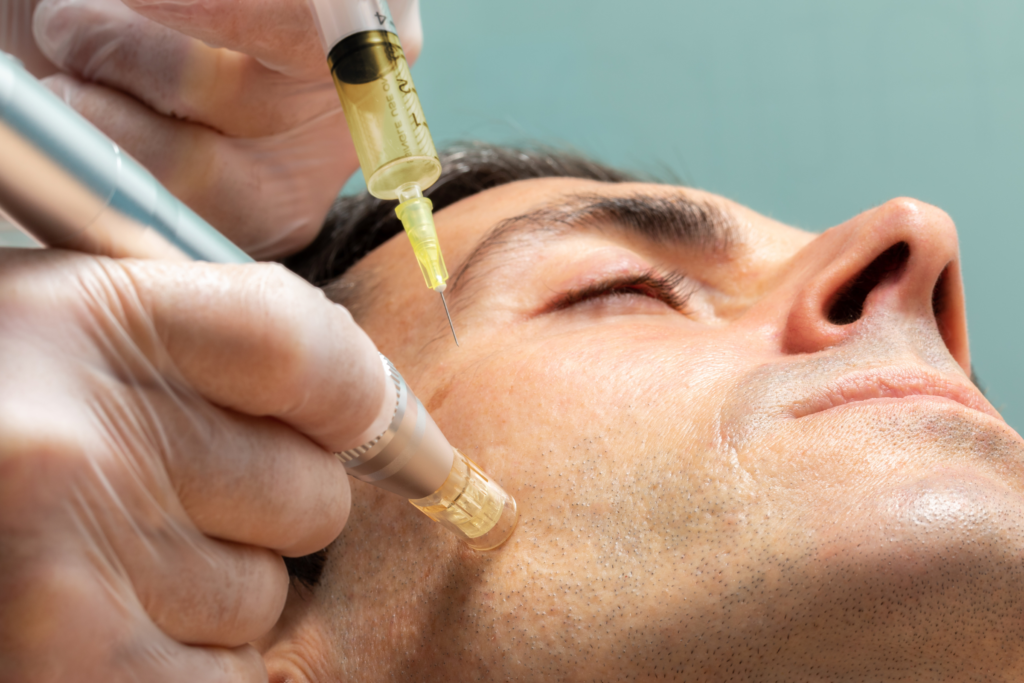
Studies have shown that micro-needling stimulates facial hair growth.
Doctors perform micro-needling – tiny needle pricks across the facial area – to promote collagen growth on the skin and also stimulate hair growth.
Microneedling even works in tandem with minoxidil, especially if minoxidil alone is not providing results.
Are vitamins good for beard growth?
Many more home-remedy types may recommend searching for vitamins to help stimulate hair growth, but there are so many vitamins to choose from. One paper we found reviewed countless academic articles to determine the efficacy of different vitamins on people with alopecia.
Vitamins that may stimulate beard growth include:
- Iron – Low iron levels are often reported in women with androgenetic alopecia. Scientists recommended supplementing iron for people losing hair can help them stimulate new hair growth.
- Vitamin C – Taking your daily recommended amount of vitamin C can help facial hair grow consistently if you have androgenetic alopecia or telogen effluvium. The scientists found that this was especially true with people who are iron deficient.
- Vitamin D – Vitamin D is a recommended vitamin that can help people grow their beards. People experiencing alopecia areata should consider increasing their vitamin D intake because many studies show this condition reduces vitamin D.
What vitamins didn’t help hair growth?
In this review, the scientists did not believe there was enough data to recommend zinc, riboflavin, folic acid, or vitamin B12 to reverse hair loss.
In addition, neither vitamin E nor biotin is supported by studies for people experiencing hair loss. Specifically, they said biotin can result in false positives for people with alopecia.
Can any other supplements help with beard growth?
Many marketed supplements like biotin, zinc, and vitamin A profess to solve hair growth problems. Despite the money forked over for these products, not all scientists are convinced they work to grow a beard.
That said, it can be hard to prove that supplements will never cause beard growth, so choose your supplements carefully after extensive research.
Do beard really oils work?
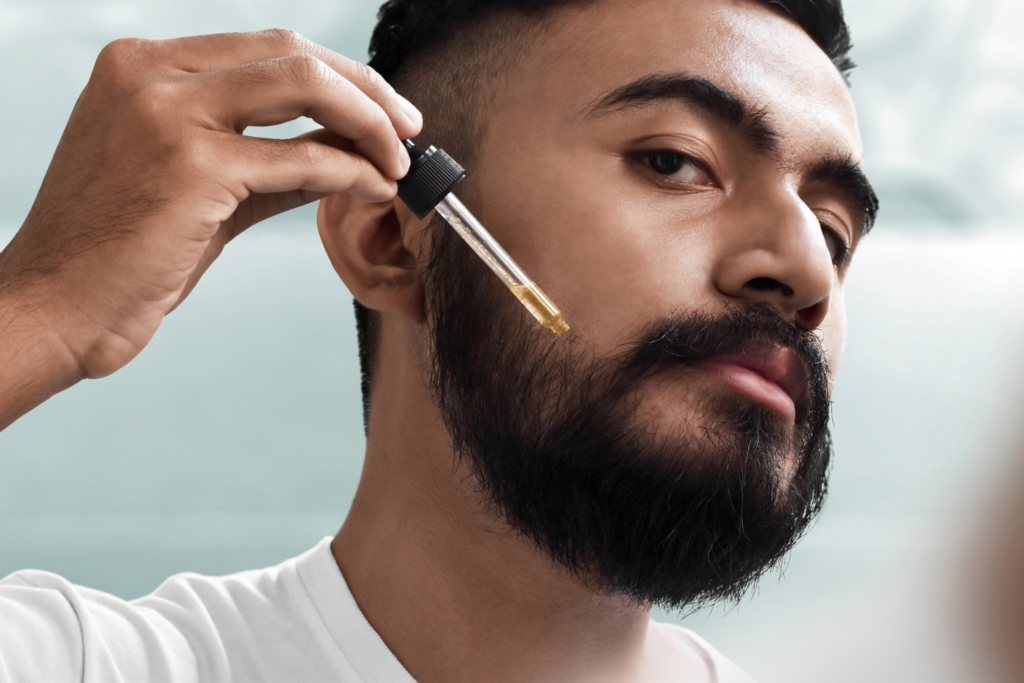
There is no scientific evidence to support that beard oils aid in beard growth. That being said, beard oils are helpful in creating healthy skin that will improve beard growth.
Ensure you understand the benefits of beard oils before you go buying some marketed for beard growth.
Which oil is best for beard growth?
Above, we explained the vitamins that benefit beard growth — specifically iron, vitamin A, and vitamin D. If you find beard oils with these vitamins in them, they may be more successful at building a bushy beard.
However, we recommend searching for beard oils that create more moisturized skin, cleaner hair, and shinier beards. A healthy chin grows a healthy beard. Look for these ingredients:
- Jojoba oil – Extracted from the jojoba tree shrub, this powerhouse oil is the star of many men’s cosmetics. This odorless oil lasts longer than most and is stable against heat and doesn’t clog pores.
- Avocado oil – Avocado oil provides hydration and shine to beards. Use this to counter beards when they’re persistently frizzy or tangled.
- Argan oil – This oil that comes from Morocco is great to combat those dry and itchy beards. Additionally, it can reduce beard flakes as well.
- Essential oils – There are so many essential oils to make your beard smell and look great. Try cedarwood oil, coconut oil, or grapeseed oil.
Do beard growth creams really work?
Certain beard growth creams can be effective at bringing back lost hair.
Typically beard growth creams with minoxidil, iron, vitamin C, or vitamin D are good places to begin your search.
Additionally, a certified doctor may be a great place to begin your search as they can also order you prescription strength medicine.
Can shaving every day speed up beard growth?
It’s certainly a myth that shaving prompts beard growth, but why is it so persuasive? Since 1928, and countless academic papers since, studies have shown that shaving does not cause hair to grow back faster.
While shaving doesn’t cause beards to grow more quickly, it is easier to see hairs growing from a freshly shaved face than to see millimeters being added to a beard.
When beards are freshly shaven, it’s easier to see the daily progress with new hairs as opposed to hair that is several inches long. This illusion likely contributes to the myth.
Can any foods increase beard growth?

Just like multivitamins, many natural foods are packed with essential nutrients that can help your beard grow beyond what you thought possible.
Here are a few foods that may help your beard grow:
- Seafood – Seafood generally has countless nutrients that will keep your body healthy and your beard growing. We recommend oysters for iron and trout or salmon for vitamin D.
- Milk & eggs – A simple solution to increase your beard growth can be adding milk and eggs to your morning routine. Both are excellent sources of nutrients, specifically vitamin D to help with beard growth.
- Fruits – Vitamin C is a great nutrient that scientists have seen contributes to hair growth. We recommend orange juice, grapefruit, kiwi, and strawberries as great sources of vitamin C.
What if you are dealing with a patchy beard?
If you’re dealing with a patchy beard, you should do some work to understand why your hair doesn’t grow in certain areas.
If it’s because of a type of alopecia, there may be avenues for you to grow more facial hair.
In some cases, it may not be meant to be.
What if you are dealing with a thin beard?
Depending on your age, your beard may have the potential to become thicker over time.
Additionally, some types of beard oils make your beard appear thicker.

